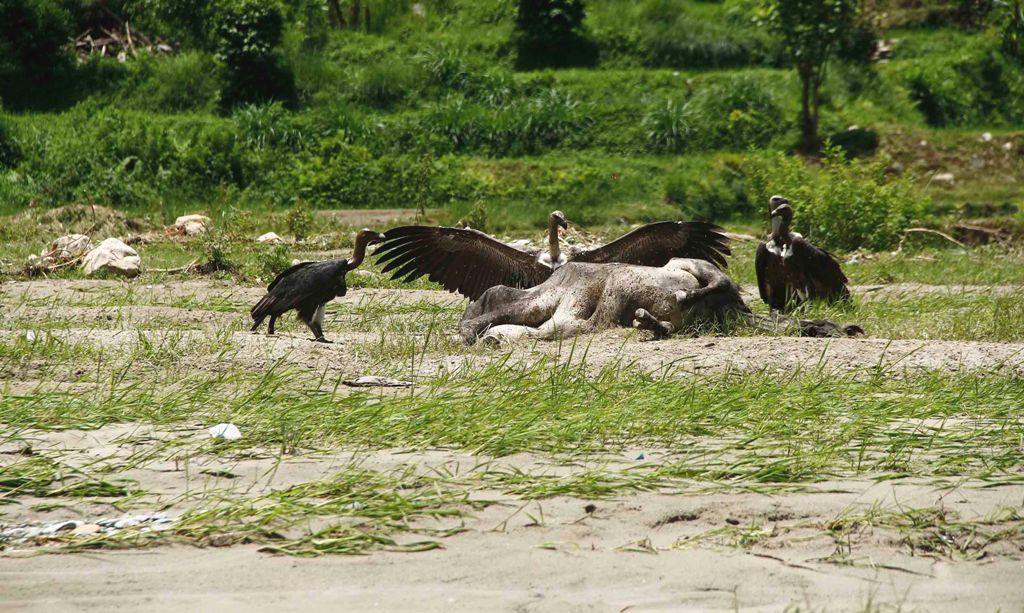Krishnamani Baral in Pokhara
Monsoon floods usually bring death and destruction, but that is not necessarily bad news for the vultures of Pokhara Valley which feed on carrion of dead animals brought down by Himalayan rivers.
The vigorous start to the monsoon rains has caused floods across central Nepal to overflow, and triggered landslides that have blocked highways. While this has brought misery to humans, the raptors are on a feeding frenzy.
Because of its low elevation and proximity to the Annapurna which are over 8,000m high, Pokhara is home to all nine species of the vultures found in South Asia. The temperature is just right, not too hot or cold for the bird.

The Valley’s terrain is also ideal for vultures which soar on the updrafts, and circle looking for food on the ground. Paragliders imitate the soaring vultures, often accompanying the birds above Sarangkot, and Pokhara has become a favourite international destination for the sport.
At a Jatayu Restaurant in Kaski’s Ghachok, one can easily spot 5-6 different species of the vultures on a daily basis. Globally critically endangered Slender-billed and White-rumped vultures have been nesting and rearing their young ones in Nirmal Pokhari and Bharat Pokhari areas for years.
Although vulture populations in Nepal’s mountains appear stable, they are declining in the plains and across South Asia. Indiscriminate poisoning of stray animals using lethal pesticides is ending up in the feed of the raptors, leading to their mass deaths.
In April, 69 vultures of four species (White-rumped, Himalayan Griffons, Cinereous and Slender-billed), two of them on the IUCN list of critically endangered birds were found dead on the grounds of a college campus in Nawalparasi.
Initial investigation found the cause of the death to be pesticide poisoning of dogs, on which the vultures fed. The incident was a huge setback to Nepal’s successful effort to protect the birds from the brink of extinction after they started dying mysteriously in the 1990s.
An analgesic called Diclofenac used to treat sick livestock was found to be the cause of decline. Just 30ml of Diclofenac can kill as many as 800 vultures. Subsequently, the steroid was banned in South Asia and Nepal in 2006.Since then, local communities and nature groups in the country have worked relentlessly to recover the vulture population, the most notable of which is the setting up of ‘vulture restaurants’ that serve safe, uncontaminated meat for the raptors to feed on.
There are now over half a dozen feeding centres ‘Jatayu’ Restaurants in Nawalparasi, Rupandehi, Dang, Kailali, Kaski and Sunsari districts across the Tarai and foothills. The effort saw a significant revival of the vulture population in Nepal, which had declined from 1.6 million to 20,000 individuals.
Vultures get a bad rap but are an integral part of the ecosystem, they protect humans and animals alike from various diseases by feeding on carcasses. In recent times, there has been a shortage of food as well as shelter. Death due to high-voltage electric shock is also on the rise.
